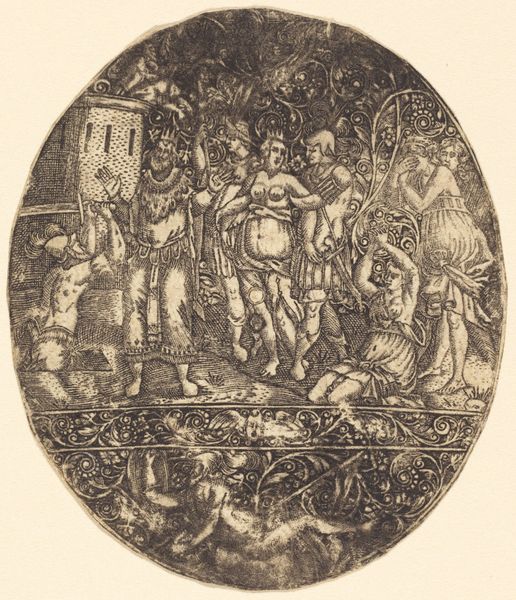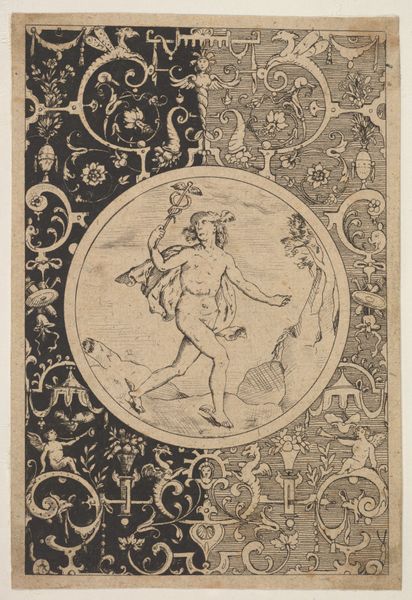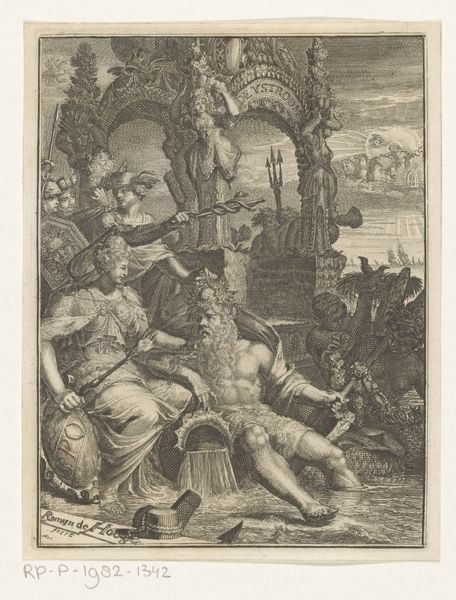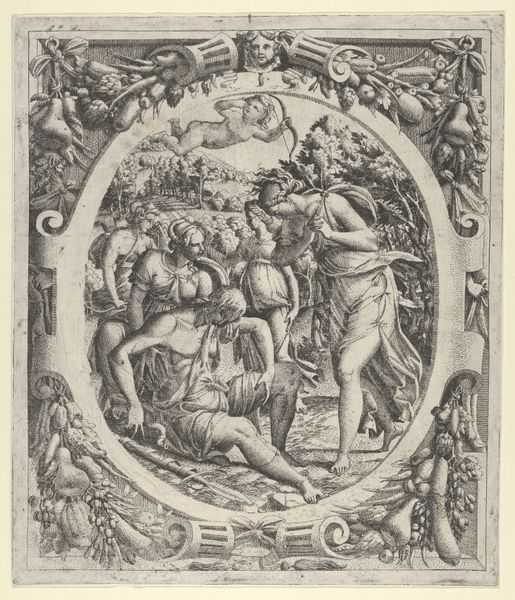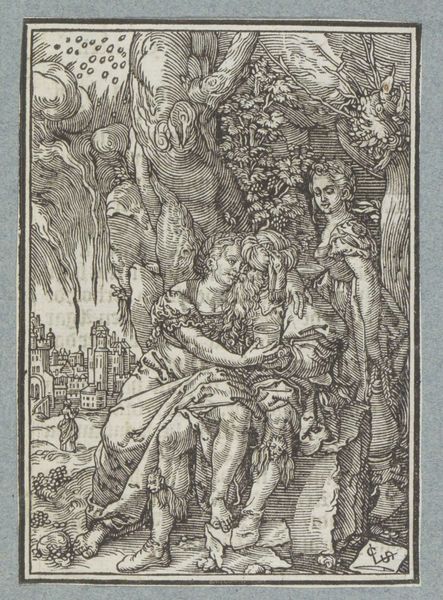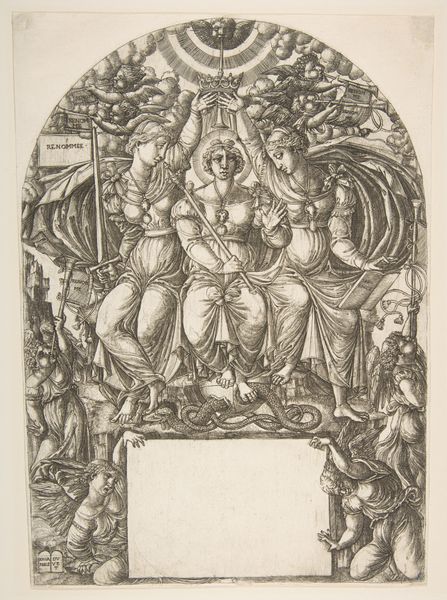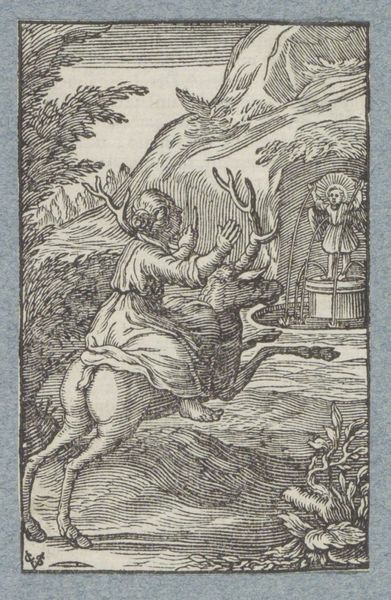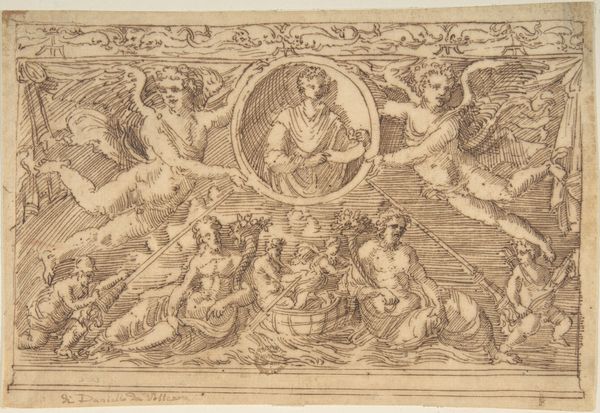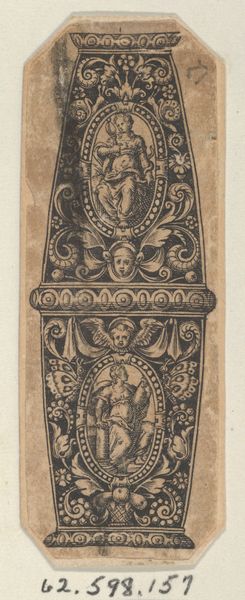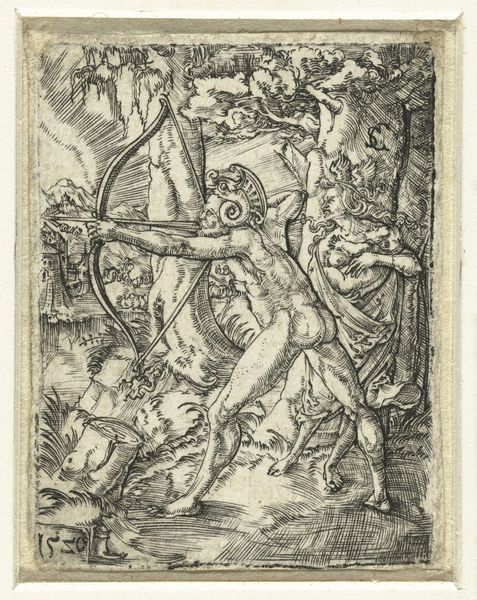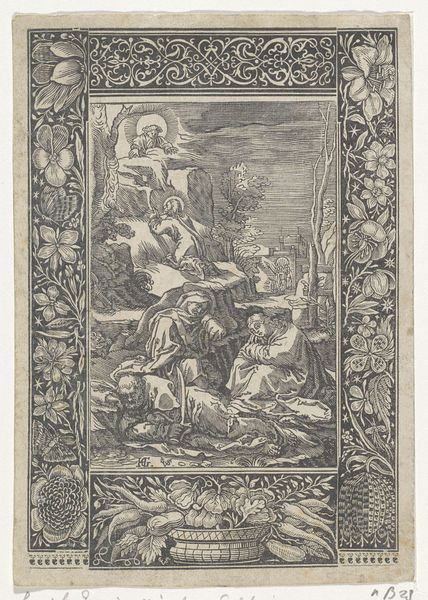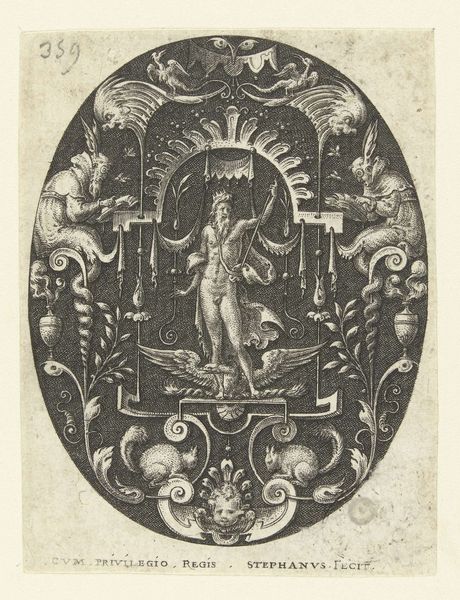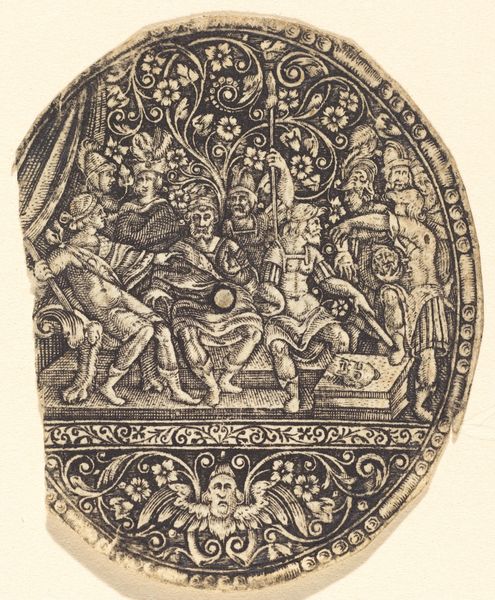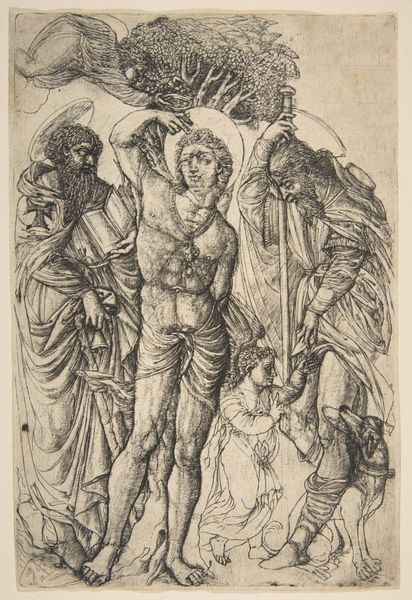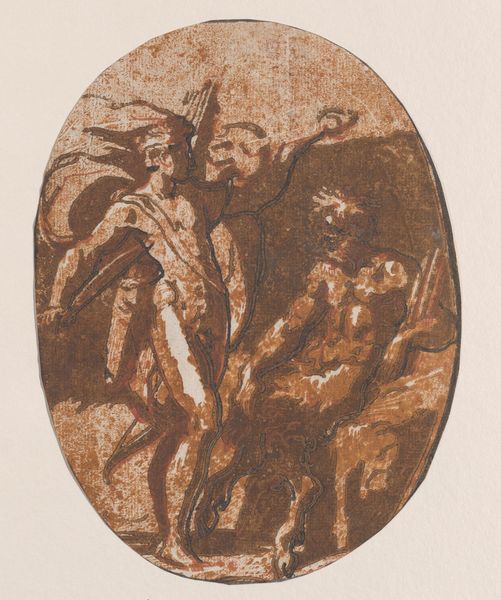
print, engraving
# print
#
pencil sketch
#
landscape
#
charcoal drawing
#
figuration
#
form
#
line
#
genre-painting
#
italian-renaissance
#
italy
#
engraving
Dimensions: 1 15/16 x 1 5/8 in. (4.92 x 4.13 cm) (image)
Copyright: Public Domain
Editor: So, here we have Peregino da Cesena's "Three Women Dancing," made around the 16th century. It's an engraving, and I’m immediately struck by the level of detail achieved. It has this dreamy, almost ethereal quality. What stands out to you? Curator: As a materialist, I’m immediately drawn to the production process itself. Engraving involves significant labor, physically carving lines into a metal plate. How does that affect your understanding of the final image, compared to say, a painting? Editor: Well, it feels like each line has been considered, giving it a graphic precision that's different from the free flow of a brushstroke. Does the process itself impact the subject matter or the way these figures are presented? Curator: Absolutely. Think about the availability and cost of materials during the Renaissance. Printmaking allowed for wider dissemination of images, democratizing access to art beyond the wealthy elite. Are these dancing women a celebration of the human form, or is it an idealized representation influenced by social norms? Editor: I hadn’t considered the link between material accessibility and the spread of artistic ideas. Curator: Consider how printmaking workshops operated – collaborative labor, apprenticeships, each stage impacting the final product. Where does 'artistic genius' truly reside in such a framework? The designer? The engraver? The publisher? Editor: It makes me realize how many hands and decisions shape what we eventually see. Thanks! Curator: And how our understanding of even a seemingly simple image like this deepens when we consider the materials and labor involved in its making!
Comments
No comments
Be the first to comment and join the conversation on the ultimate creative platform.
